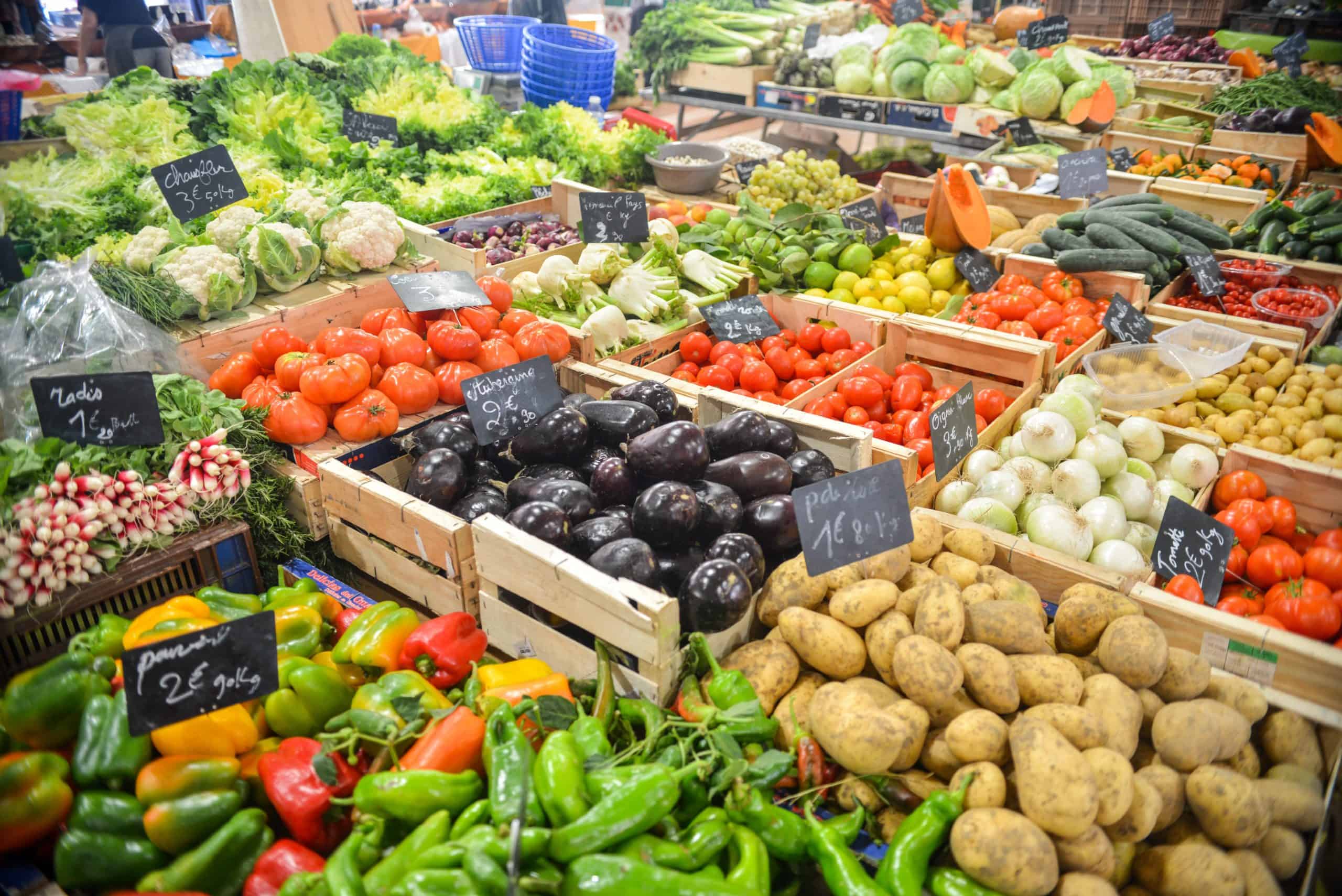Your Guide: Veggies

At some point or another, we’ve probably all heard the phrase “eat your veggies.” If only it were that simple, right?! It’s true, veggies play an extremely important role in our diets. And the recommended intake can range anywhere between 1 and 3 cups per day depending on age, sex, and activity level. So when it comes to your health journey, finding the veggie solutions that work best for you can be an extremely powerful move.
Vegetables come in SO many different shapes, sizes and forms. And choosing the right ones for your health, budget, AND enjoyment can get a bit complicated. Does it really matter if I choose organic or conventional… non-GMO… fresh, frozen, or canned? But which one is on sale? Should I choose fried or steamed? These are all questions we might ask ourselves while scanning a restaurant menu or the aisles at the store. Let’s take a closer look at some of the factors to consider before filling your plate.
Choose a Variety
Choosing an assortment of different vegetables, and in different forms like fresh, frozen, or canned, provides greater variety and nutritional value overall. Which one is best? There’s no right or wrong answer to that question (phew!). Each form has its own perks… frozen foods are preserved straight from the field and in their most nutrient-dense state, while fresh foods are typically free of any additives or preservatives. Canned foods are often higher in sodium, but give the veggies a quick rinse before you throw them in your dish and they can be a super quick and nutritious addition to any meal.
Starchy Vegetables
Although vegetables as a whole have a reputation for being healthy, many people are confused about the starchy vegetable subgroup—are they also healthy or should they be avoided? When we talk about starchy vegetables, think of foods like corn, potatoes, beans, and peas. Starchy vegetables are higher in carbohydrates and they are also usually higher in calories than the other vegetable groups. For example…
1 cup of starchy corn vs. 1 cup of non-starchy broccoli:
The corn contains 125 calories while the same amount of broccoli contains only 30 calories.
Although the calorie and carbohydrate content of a food are extremely important, they are not the only factors to consider when evaluating overall nutrition quality. Starchy vegetables also serve as a great source of many vitamins, minerals, fiber, and even antioxidants. In fact, starchy vegetables as a whole provide more potassium than any other vegetable group! Continuing with the same example from above, the corn contains around 500 mg of potassium per cup while the broccoli contains only 275 mg per cup. Hooray for potassium and starchy veggies!
Preparation Techniques
Speaking of starchy vegetables… let’s talk french fries for a minute. Research shows that white vegetables are most often consumed in the form of fried potatoes. And although french fries and other fried veggies do still count towards overall vegetable intake, and can definitely still be part of a healthy diet in moderation, the potential health benefits of these veggies are greater when prepared in nutrient-dense forms and without additions of large amounts of salt, fat, and sugar. In order to get the most nutrient bang for your buck, consider cooking methods like boiling, broiling, steaming, grilling, baking, poaching, and microwaving.
Conventional, Organic, or Non-GMO?
The answer to this one is simple… do what feels right for YOU! Maybe your core values and beliefs lead you to want to choose organic and non-GMO foods when possible. Or maybe they don’t! These are hot topics, and everyone has a different option. Plus, the research on these issues is young and can be contradicting at times. But one thing is for sure… more veggies in your diet is better than less. Don’t let a label prevent you from making a healthy choice.
Locality and Seasonality
What’s the big deal about eating local anyway? For one, buying local often means buying seasonally as well. Typically, veggies that are currently in season tend to have more robust flavors AND higher nutrient contents since they are picked at their peak ripeness and delivered to your plate quickly thereafter. If that’s not enough to convince you… eating local also benefits your local economy and environment. And who knows… shopping at your local farmer’s market means you might even get the opportunity to meet the people who have grown your food face-to-face. Now that’s pretty cool!
Explore Your Options
It can take multiple exposures to a certain food before your taste buds begin to adjust. So don’t be afraid to get creative in the kitchen, step out of your comfort zone, and try something new! See a new veggie at the store that you’ve never tried? Put it in your basket! Get home, cook it, and realize it’s just not for you? Explore some new recipes and try preparing it a different way next time!
Trial and error is the name of the veggie game. And even once you do find those veggies that are tried and true for your individual preference, there’s still tons of experimenting that can be done in the kitchen to keep those options fresh and exciting. Feeling ready to find your next favorite veggie?! Take a look at the articles here and here for some inspiration.

